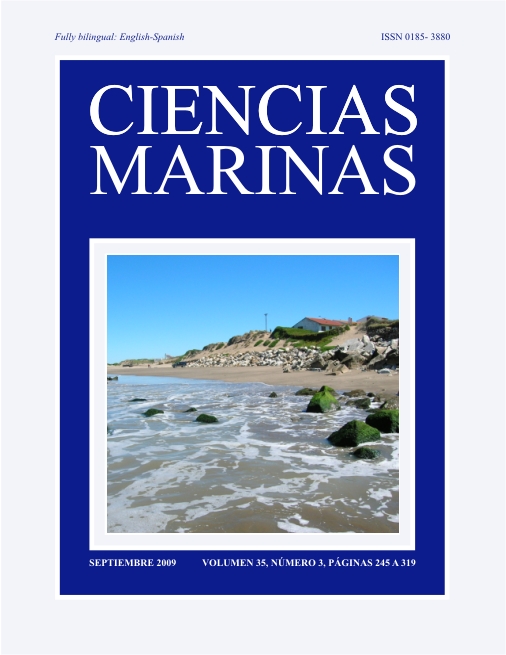Inertial Currents in the southern Gulf of Mexico
Main Article Content
Abstract
Current velocity data recorded from 1 March to 17 June 1997 at four stations in the Bay of Campeche, southern Gulf of Mexico, were used to describe inertial currents. Data were low-pass filtered using a Lanczos filter, and transformed to the frequency domain with the classical Fast Fourier Transform, rotary spectra, and the Morlet Wavelet Method. The strongest total currents developed in the eastern part of the bay, with a dominant east-west component. The predominant direction of the total current was parallel to the coast. The amplitude of tidal currents was small when compared with subtidal currents. During the sampling period several episodes of inertial currents were observed, some of which corresponded to those predicted by theory. Inertial currents in the lower layer were linked through large phase lags, revealing the baroclinic mode of the inertial currents. Spectral energy was concentrated in the low-frequency bands, corresponding to inertial and subinertial periods. The dominance of spectral energy at low frequencies reveals the influence of mesoscale cyclonic and small-scale anticyclonic eddies in the northeastern Bay of Campeche. These eddies are believed to be the origin of the inertial currents, since the inertial currents observed were unrelated to wind forcing.
Downloads
Article Details
This is an open access article distributed under a Creative Commons Attribution 4.0 License, which allows you to share and adapt the work, as long as you give appropriate credit to the original author(s) and the source, provide a link to the Creative Commons license, and indicate if changes were made. Figures, tables and other elements in the article are included in the article’s CC BY 4.0 license, unless otherwise indicated. The journal title is protected by copyrights and not subject to this license. Full license deed can be viewed here.

